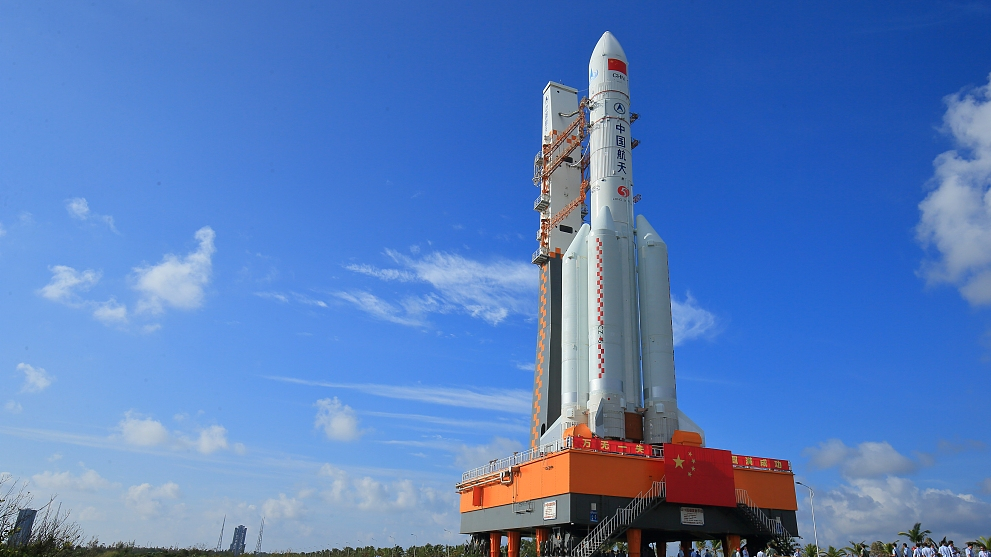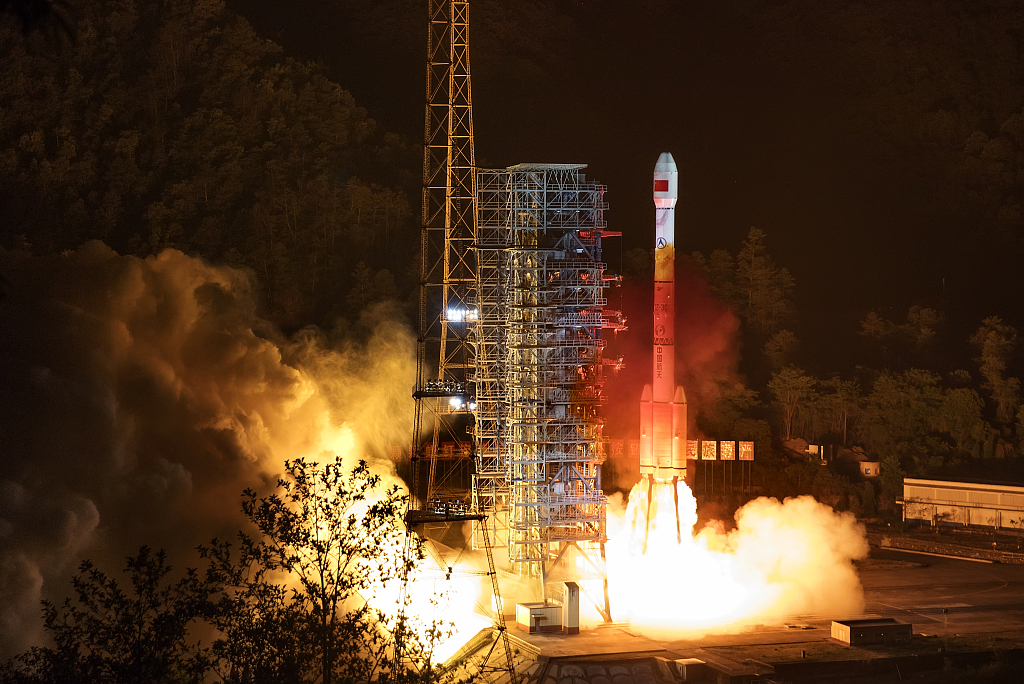

Editor's note: Iram Khan is a Pakistan-based commentator on international affairs. The article reflects the author's opinions, and not necessarily the views of CGTN.
Several countries have incorporated space programs hoping to unlock secrets of the world lying beyond ours. Scientists and researchers in laboratories around the globe look at the stars and planets not as inhabitants of their countries but as a single human species. Their achievements in understanding the universe have been possible only through the spirit of collaboration.
Isolated space exploration that was fuelled by the Cold War between the United States and Russia during the latter half of the last century is no longer viable. It had sparked a race to go out first and reach out the farthest. But while competing with each other, the two nations spent huge parts of their capital on needless technologies.
China entered much later and turned the race into a collaborative effort. Its space policy includes international cooperation as a basic element. The country is presently teaming up with advanced nations to build its expertise while providing a chance to others to further theirs.
Chang'e-4 has recently been in the news as the second Chinese spacecraft to land on the moon. China called upon its scientific partners to make use of this closest-ever observation of the far side of the moon and countries like Germany, Sweden and Netherlands joined in to utilize the opportunity.

A staff member guides visitors on the docking of Tiangong-2 through MR technology in Beijing, May 29, 2019. /VCG Photo
The China National Space Administration (CNSA) has extended its lunar expedition to the United Nations Office for Outer Space Affairs (UNOOSA), Turkey, Ethiopia and Pakistan. Through agreements, they will be benefiting from China's advances and stepping up their mechanisms.
The United States and Russia are now assisting each other in their space programs. They are part of the International Space Station (ISS), among several others, where multinational crews undertake experiments in the artificial satellite orbiting the earth.
Although China hasn't been invited to the ISS coalition, it is catching up fast in building its own space station. The first two stages of the plan, i. e. sending astronauts in space and testing temporary space labs, have been completed. The first lab, Tiangong-1, remained in service from 2011 to 2018 and Tiangong-2 remained in orbit for over 1,000 days before completing its lifespan this July.
Switzerland, Germany and Poland are working with China to develop detectors which will help in the study of black holes at the station. In addition to that, experiments for a total of 17 countries and 23 entities will be conducted onboard.
China has welcomed foreign astronauts to join its space station program and a provision to allow docking of spacecraft developed by other countries if they support the Chinese docking system. This is the clearest yet message of the multilateral space exploration approach that China has adopted.
Even the China-proposed manned research station on the moon is open for collaboration where Europe and Russia have stepped forward to jointly delve into the proposal. The lunar station is an ambitious plan expected for launch by 2030 with the positioning of robots. It will be a base for astronauts' long-term stays and serve as an outpost for onward missions.
Right from the planning phase, the lunar station assimilates a collaborative concept. An international team will carry out deliberations for two to three years to finalize its design and chalk out a coordinated strategy. Meanwhile, multinational affairs at the station will be governed by an intergovernmental coordination committee.

The Xichang Satellite Launch Center successfully launched China's 45th BeiDou navigation satellite by a Long March 3c carrier rocket in Liangshan, Sichuan Province, May 17, 2019. /VCG Photo
China is pursuing global cooperation through a mega-development project named the Belt and Road Initiative (BRI). As the product matures, China is expanding its economic and diplomatic relations. Apart from assisting its partners in meeting their infrastructure needs, China is enabling them to fulfill their communication and scientific requirements by offering them participation in its space headways.
Many BRI participants are developing economies. China has been facilitating their satellite launches and allowing them to improve their capabilities at a fraction of the costs borne by the developed countries. Its close allies like Pakistan have signed up for their astronauts to be trained by China.
The BeiDou Navigation Satellite System (BDS) is another impressive Chinese venture that will be completed by 2020. It provides location services with an accuracy of 10 meters worldwide and 5 meters in the Asia-Pacific region and finds its application in transport, navigation, metrology, mapping and security. A number of recent projects in Kuwait, Myanmar, Uganda and Thailand have been completed while utilizing the BDS service.
A view from outer space presents a holistic picture of our planet. Our personal and international rivalries fade out against the unique identity of the Earth against the backdrop of a fascinating but hostile cosmos. It is, therefore, through collaboration that humanity can reach new worlds and ensure the pursuit of our shared future.
(If you want to contribute and have specific expertise, please contact us at opinions@cgtn.com.)

Copyright © 2018 CGTN. Beijing ICP prepared NO.16065310-3
Copyright © 2018 CGTN. Beijing ICP prepared NO.16065310-3